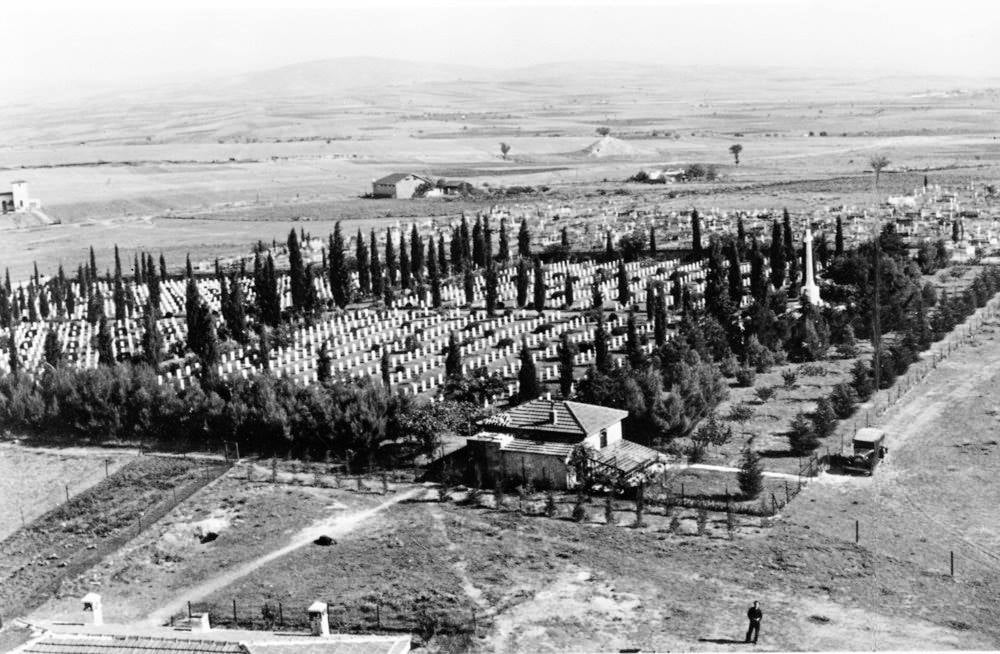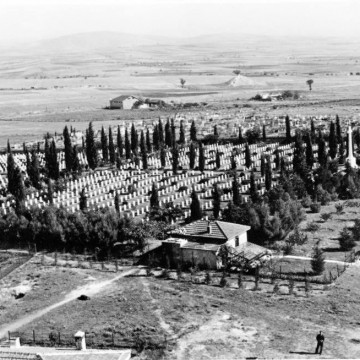Mikra British Cemetery
The pressure exerted by the Central Powers on Serbia prompted Entente to deploy troops in Macedonia to help the Serbs. The Macedonian Front was quickly reinforced with a multinational force of French, British, Serbs, Russians, Italians, Greeks, and colonial troops from Asia and Africa, called upon to face the armies of Austria-Hungary, Germany, Bulgaria, and the Ottoman Empire. The soldiers of the Triple Entente built hundreds of buildings and facilities to serve their war needs (barracks, hospitals, airports, etc.).
British forces were concentrated in Thessaloniki and remained in the city until the war’s end. Unfortunately, some British soldiers and officers were to stay in Macedonia forever, as they lost their lives in the absurdity of the war. As a result, the British government decided to establish a military cemetery in Mikra, next to the municipal cemeteries of Kalamaria and behind the Dalipi camp. The cemetery was designed by the Scottish architect Robert Lorimer (1864-1929) and was built outside the city’s residential areas. It was inaugurated in April 1917 and operated until the mid-1920s. It is a burial ground for 1810 soldiers from the British Commonwealth and 147 dead of other nationalities (Greeks, Russians, Bulgarians, Turks). The Commonwealth Military Cemetery of Mikra is one of the few monuments in the greater Thessaloniki area to commemorate the prolonged stay of thousands of Allied soldiers.
The cemetery includes memorial columns for the almost five hundred victims from the sinking of allied ships. There is also a monument dedicated to the approximately five hundred nurses, military personnel and men of the Commonwealth who lost their lives at sea during the transportation of troops in the Mediterranean. Finally, there is a guest book and a register with the names of those buried in the British cemetery of Mikra.


